Aric Audio Super KT Push-Pull Monoblock Amplifiers
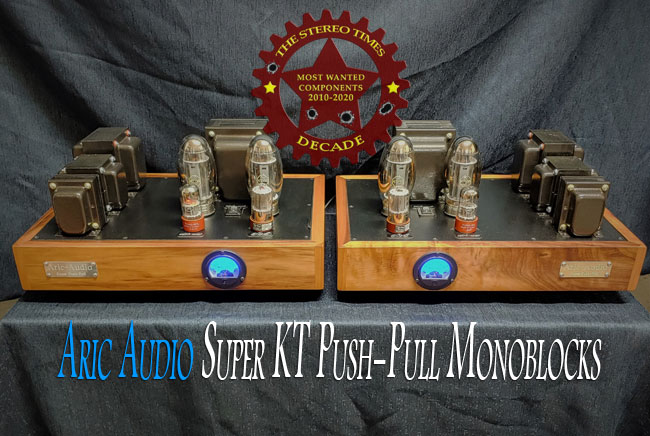
 I had an interesting introduction to Aric Audio. Fellow contributor, Terry “TJ” London, informed of Aric Audio, located in Brimfield, MA, a couple of years ago while he was working on a review for another publication. TJ always spoke enthusiastically about Aric Audio equipment and would invariably end the conversation with an invitation to come out and give it a listen. My visits to TJ’s home have been every now and then, at best, and alas, I missed having a chance to hear any of the Aric Audio offerings while they were in residence at TJ’s. Things became positively more interesting when TJ joined Stereo Times. An opportunity arose to review a new Aric Audio amplifier and it was decided that a different voice should be chosen to introduce this piece to the audiophile world. Luckily for me, TJ, in his infinite wisdom, recommended me for the review.
I had an interesting introduction to Aric Audio. Fellow contributor, Terry “TJ” London, informed of Aric Audio, located in Brimfield, MA, a couple of years ago while he was working on a review for another publication. TJ always spoke enthusiastically about Aric Audio equipment and would invariably end the conversation with an invitation to come out and give it a listen. My visits to TJ’s home have been every now and then, at best, and alas, I missed having a chance to hear any of the Aric Audio offerings while they were in residence at TJ’s. Things became positively more interesting when TJ joined Stereo Times. An opportunity arose to review a new Aric Audio amplifier and it was decided that a different voice should be chosen to introduce this piece to the audiophile world. Luckily for me, TJ, in his infinite wisdom, recommended me for the review.
I heard good things about Aric Audio from TJ and friends who had also heard of their products and who had been by his home to listen as well. I figured it would be an interesting exercise. I soon got in touch with Aric Audio’s owner and chief designer, Aric Kimball (herein AK). He arranged for me to do a review on a new amplifier to the line; the Super KT Push-Pull monoblock amplifier (henceforth Super KT).
Technically Speaking
Before the arrival of the Super KT, I had a couple of discussions with AK about his passion for music and love of tube amp designs.
AK explained, because of his numerous “roles” at the company where he is “the designer, engineer, sole builder and head salesman!” You can’t wear all of those hats unless you genuinely love it. I wondered if he owns a broom too. On a serious note, AK has got to be one of the most accommodating, most friendly, and most tube knowledgeable audio guys I have ever met. A couple of weeks after we spoke, the Super KTs arrived in three boxes. There was a box for each amplifier and a box full of tubes.
This was not a small box as he had several flavors of signal tubes and a variety of power tubes. Now it is clear to me what he meant when he said, “I’m sending along some tubes, I hope you don’t mind.” When it comes to tubes, he really knows his stuff and is sharp. I sent him a photo of my setup with the Super KTs between my speakers, and off of that picture, offered a tube change recommendation. Stunning.
The Super KTs came neatly and securely packed in thick stiff foam material on all sides and the bottom of the box. As for the Super KTs themselves, they are solidly built and have some weight to them.
They have a smallish footprint, like Roger Modjeski’s (God bless him) RM-9 amplifier. Not big at all, but when you go to pick it up, you look around and hope no one heard you grunting. The heft of these amps kind of sneaks up on you. One of the unique attributes of the Super KT’s is their flexibility in giving the owner the choice – of listening in ultra-linear mode or, if you desire, triode-strapped. The Super KTs have the following output with these tubes:
EL34 – triode mode = 20 watts/ U.L. mode = 35 watts
KT88 – triode mode = 25 watts/ U.L. mode = 45 watts
KT-120 – triode mode = 45 watts/ U.L. mode = 60 watts
KT-150 – triode mode = 60 watts/ U.L. mode = 80 watts
For the sake of this review, and to keep things from getting confusing, I used the EL34s and KT88s in my comments pertaining to triode-strapped mode and used the KT-120s and KT-150s for my ultra-linear mode comments. I actually listened to the KT88s in both modes and was on the fence, then decided to lump them in with the strapped-triode group.
From the Super KT’s owner’s manual, “This amplifier represents a departure from the typical push-pull amplifier in that it can be used to produce 20 watts of Triode sound using EL34’s and with the flip of 3 switches can produce 80 watts in Ultra-Linear mode using KT-150’s (and everything in between).”
 I would totally concur with that. There are a lot of different modes to try and switch. But you do have a lot of flexibility with this amp. There’ll be more to come on that later in this review. This Super KT amp utilizes a 6V6GT tube (triode-strapped) as the phase splitter, which produces a very linear low-impedance driver with excellent balance at the outputs. At the front end of the amplifier, a series regulated push-pull input stage is used and can accept either 6SN7 or 6SL7 tubes, depending on whether or not a preamp is being used with the amp. These amplifiers use Edcor output transformers and Hammond power transformers.
I would totally concur with that. There are a lot of different modes to try and switch. But you do have a lot of flexibility with this amp. There’ll be more to come on that later in this review. This Super KT amp utilizes a 6V6GT tube (triode-strapped) as the phase splitter, which produces a very linear low-impedance driver with excellent balance at the outputs. At the front end of the amplifier, a series regulated push-pull input stage is used and can accept either 6SN7 or 6SL7 tubes, depending on whether or not a preamp is being used with the amp. These amplifiers use Edcor output transformers and Hammond power transformers.
Hammond and Triad chokes are used throughout. Nichicon capacitors are used throughout the power supply as well as ultra-fast recovery diodes and DC heaters for the input and driver tubes. This amplifier is entirely hand-built and point-to-point wired here in the USA and has a 2-year warranty (parts and labor inclusive).
On the rear of the amplifier is an IEC jack with an integrated power switch. If facing the amp, both switches flipped to the right will power the amplifier on and the power switch will be illuminated red to indicate the power. There’s a 4-amp slo-blo fuse (removable cartridge) between the power inlet and the switch with a spare in the cartridge. Closest to the speaker output is the variable feedback/damping control and nearest to the RCA input is a gain/level is a gain/level control. In most instances this control. In most instances, this control should be left all the way up unless the source or preamp does not have volume control. This control can be used to adjust the overall volume of the amplifier. It is vitally important should you have questions to consult your owner’s manual or get in touch with Aric Audio.
How It Sounds
I put about 80 hours on the Push-Pull Monoblocks before I did any serious listening. I started out listening to the amps in ultra-linear mode but also putting in a fair amount of time listening to triode-strapped. Initial listening evaluations were impressive. The Super KT’s threw a large, airy and spacious soundstage that was transparent and focused. The performers on the stage were well defined and seemingly very much present in my room.
 On more than one occasion, and with good vinyl recordings, I had the feeling I could walk up to and around performers in the space they seemingly occupied. Tonally, the Super KT’s are slightly on the tubey side of neutral and sounds very natural. In triode-strapped mode it was slightly more so if you prefer a “sweeter” sound. Both ways are excellent, but I found the sound in ultra-linear mode was livelier and more dynamic with a more robust, stronger bass with an exceptional micro and macro detail. In triode-strapped mode, I felt the sound was not quite as fast dealing with detail and transients but had a smoother, breathier sound with maybe a few more tonal colors with vocals. The triode-strapped mode also possesses a resiny sound with the bow on violin strings that was mesmerizing. Dynamics were particularly good and concise in push-pull mode, but I certainly did not feel were lacking at all in triode-strapped mode. The high-frequency performance was delivered with surprising naturalness and air. Triangles and cymbals sounded real and had the proper amount of decay and shimmer.
On more than one occasion, and with good vinyl recordings, I had the feeling I could walk up to and around performers in the space they seemingly occupied. Tonally, the Super KT’s are slightly on the tubey side of neutral and sounds very natural. In triode-strapped mode it was slightly more so if you prefer a “sweeter” sound. Both ways are excellent, but I found the sound in ultra-linear mode was livelier and more dynamic with a more robust, stronger bass with an exceptional micro and macro detail. In triode-strapped mode, I felt the sound was not quite as fast dealing with detail and transients but had a smoother, breathier sound with maybe a few more tonal colors with vocals. The triode-strapped mode also possesses a resiny sound with the bow on violin strings that was mesmerizing. Dynamics were particularly good and concise in push-pull mode, but I certainly did not feel were lacking at all in triode-strapped mode. The high-frequency performance was delivered with surprising naturalness and air. Triangles and cymbals sounded real and had the proper amount of decay and shimmer.
The Super KTs handled the midrange with aplomb and sounded holographic and convincing. Performers felt present and appeared to be situated in my room on a believable stage with each one having a solid image and three-dimensional space. The Super KTs made my room come alive with music. The bass performance of the Super KTs also exceeded my expectations and was indeed a pleasant surprise. Their performance was good with KT-120s and actually exceptionally good with the KT-150s at getting my Tekton Moabs to excite the room and exhibit some rumble. The Super KT’s bass was articulate and not merely of the one-note variety but had verve as well. As I hinted at previously, the Super KT’s have a beautiful tonal pallet with colors that are reproduced realistically. This was noted as being very good in ultra-linear mode and exceptional with the Super KTs set to triode-strapped mode.
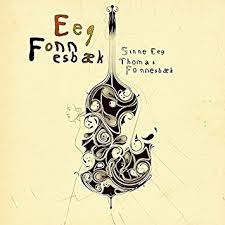 These are some of the music references I used in evaluating the Super KT’s performance. Sinne Eeg is slowly becoming one of my favorite vocalists, and this recording is becoming one of my references for female vocals. The recording is Sinne Eeg & Thomas Fonnesbaek, working together on Eeg-Fonnesbaek [Stunt]. Ms. Eeg’s vocals are mesmerizing with their tonality and purity. I have been enjoying listening to and her partner on this album. Mr. Fonnesbaek, on upright bass, is equally a virtuoso performer. The Super KTs did such a believable job reproducing the performance in my room so much so, I started to compare all my vocal references to it. This was noteworthy on the tracks, Willow Weep for Me, Taking it Slow and Body and Soul. I especially loved this album with the Super KTs in triode-strapped mode. Two CDs that I have thoroughly enjoyed, Sean Jones’ “Live From Jazz At The Bistro” [Mack Avenue] and Wynton Marsalis’ “Live At The House of Tribes” [Blue Note]
These are some of the music references I used in evaluating the Super KT’s performance. Sinne Eeg is slowly becoming one of my favorite vocalists, and this recording is becoming one of my references for female vocals. The recording is Sinne Eeg & Thomas Fonnesbaek, working together on Eeg-Fonnesbaek [Stunt]. Ms. Eeg’s vocals are mesmerizing with their tonality and purity. I have been enjoying listening to and her partner on this album. Mr. Fonnesbaek, on upright bass, is equally a virtuoso performer. The Super KTs did such a believable job reproducing the performance in my room so much so, I started to compare all my vocal references to it. This was noteworthy on the tracks, Willow Weep for Me, Taking it Slow and Body and Soul. I especially loved this album with the Super KTs in triode-strapped mode. Two CDs that I have thoroughly enjoyed, Sean Jones’ “Live From Jazz At The Bistro” [Mack Avenue] and Wynton Marsalis’ “Live At The House of Tribes” [Blue Note]
These two CD’s are excellent, not only because of Mr. Jones’ and Mr. Marsalis’ genius at playing the trumpet but because these are both terrific live recordings. It is easy to hear the Super KTs make these recordings come to life, reproducing the energy inside of the clubs with all of their ambiance and room sounds. I thought it was eerily lifelike in how I almost felt I could look over at the next table and get in on the conversations that the patrons were having. Or how the audience cheered whenever someone hit a high note or for showing their appreciation when a performer finished their solo. You can pick any selection you like but the entirety of both CDs is truly a treat.
 A new favorite of mine has been the eclectic group (eclectic in that they sound like a mixture of jazz, funk, reggae, etc.) called “Fat Freddy’s Drop.” What is even more amazing to me is that this group comprises a mixture of Samoans and New Zealanders. I do not know how this group came into being, but I want all of their albums. The first CD I heard that a friend introduced me to is, “Based On A True Story” [Drop].
A new favorite of mine has been the eclectic group (eclectic in that they sound like a mixture of jazz, funk, reggae, etc.) called “Fat Freddy’s Drop.” What is even more amazing to me is that this group comprises a mixture of Samoans and New Zealanders. I do not know how this group came into being, but I want all of their albums. The first CD I heard that a friend introduced me to is, “Based On A True Story” [Drop].
These fellas play with a deep bass beat that is a combination of R&B, funk, and reggae, combined with some slick percussion, a little synthesizer worked in and some soulful vocals give a sonic performance you become immersed in. The Super KTs kept up with the lilting bass line, the bands horn section, and the exceptional vocals. The whole CD is good, but my favorite tracks from this recording are, Cay’s Cray’s, Ray Ray and Flashback.
Another performer whose sound I have been diggin’ on has been Chris Stapleton. I got to listen to him in ultra-linear mode. He’s another artist that’s hard to define because of his versatility. He’s good whether he’s singing blues, country, or anything else. His album, From A Room Volume 1 [Mercury] has a little something for everyone.
My absolute favorite track on this disc is “Death Row.” Wow!
If you hear this track and don’t get a hint of what being on death row is like, get a pair of Super KT’s. Tee Super KT’s capture the truthfulness of Mr. Stapleton’s bluesy vocals, his haunting lead guitar riffs and J.T. Cure’s muscular bass line. Put it on ultra-linear and turn up the volume.
A Few More Thoughts in push-pull mode
 The Aric Audio Super KT Monoblocks were a pleasure to use. They are solidly built, presented no issues, no clicks or pops or hums. This is appreciated considering all of the plugging in, unplugging, the cable and power cord changes I do during a typical review.
The Aric Audio Super KT Monoblocks were a pleasure to use. They are solidly built, presented no issues, no clicks or pops or hums. This is appreciated considering all of the plugging in, unplugging, the cable and power cord changes I do during a typical review.
The only complaint any of my listening friends had was not being familiar with the type of connectors being used on the back of the amps. The connectors are not of the Neutrik or Cardas variety. But to be fair, my Moabs are bi-wired and I’m not using jumpers. Instead I used two sets of speaker cables. The spades of my Dynamic Design TBK speakers were tightened to one part of the amps’ connectors with my thumb and index finger and the other part of the connector accepted my Sound Design Labs’ banana plugs and had a surprisingly tight fit as well. Suffice it to say, whether the connectors on the back of the Super KT amps are a popular brand name or something proprietary, they worked, had a nice tight fit and nothing came loose. I should also add that, since AK is also the builder of his products, should you want Neutrik or Cardas connectors, he’ll accommodate your request for a fee. Another note to be fair about concerning my review would be that I had the Super KTs sitting on Star Sound Technology platforms. The Super KTs sounded good sitting on wood and slate shelves, but I felt I gave a good setting to show what they were really cable of.
The Super KTs sounded good with my Klyne SK-5A preamp but performed exceptionally well with my VAC Renaissance Mk V and my Audio Images Amati tube preamps. Suffice it to say, I don’t think the Super KTs have a preference for tube or solid-state preamps, but I know Aric Kimball has tube preamps in his lineup, and I would be curious to know how his amps sound when partnered with one of his preamps. In terms of cables, I had good results with my Shunyata Anaconda and my Crystal Clear Audio Magnum Opus cables. The Super KTs also performed well with Duelund, Morrow and M&G Audio cables as well, and I would conclude that their performance is not cable dependent. They clearly went next level with cables from Dynamic Design and power cords from Essential Sound Products. As far as comparisons go, the fairest one I could come up with was using one of my VAC Signature 200 iQ’s used in stereo where it operates at 100 watts per channel.
I can honestly say that I did not miss or wish for my VAC stereo amp while listening to the Super KTs. They forced me to look at how I was using my VAC amps and change the output tap and change tubes before they started to perform up to their cost. I am profoundly grateful to the Super KTs in that respect as they helped me to step up the level of performance in my system.
I want to touch on a couple of other items of note pertaining to the Super KTs. The first thing is their flexibility. Not once did I feel cheated, or that anything was missing, performance-wise, when I had the Super KTs in triode-strapped mode instead of ultra-linear. I did not find that there was anything dramatic in the differences between the sound of the two modes, but there are enough nuances that you may prefer the sound of one over the other. At the same time, you can make tube changes to the Super KTs and really dial in the sound you want. That leads me to the other point I want to touch on. When you are ready to purchase a pair of Super KTs, you can tell AK which type of power tubes you would like him to supply with your monoblocks. He will try to accommodate you if it’s a stock tube he uses. As I mentioned, I like the sound of the Super KTs in ultra-linear mode but could very easily be happy living with the amps in triode-strapped as well. All in all, I was totally impressed with the Aric Audio Super KT Push-Pull monoblocks and with the support of Aric Kimball.
The amplifiers are sure to please their build quality and sonic performance and, are flexible enough to supply most audiophiles’ needs. I can heartily give the Super KT Push-Pull monoblocks a “Most Wanted Component” designation.


mike wright
Specifications:
Aric Audio Super KT Push-Pull Monoblock Amplifiers – $6,750
Power Output
EL34 – triode mode = 20 watts/ U.L. mode = 35 watts
KT88 – triode mode = 25 watts/ U.L. mode = 45 watts
KT-120 – triode mode = 45 watts/ U.L. mode = 60 watts
KT-150 – triode mode = 60 watts/ U.L. mode = 80 watts
Feedback/Damping – up to 15 dB
Frequency Response – 20hz to 20Khz,
Chassis – Walnut outer frame/Poplar inner frame, Aluminum top and bottom plates
Weight – 37.5 pounds (unpacked)/43 pounds (shipping weight)
Dimensions – 17.5” W X9” H X 12.5” D (unpacked)
Contact
Manufacturer: Aric Audio
Website: https://www.aricaudio.com
Contact: https://www.aricaudio.com/contact.php
Phone: 413-627-2543
Associated Equipment:
Speakers
Tekton Design Moabs
Amplifier
VAC Signature 200 iQ Amplifiers (used in stereo and mono)
BSC Audio BSC100m 100 Watt Mono-amps
Preamplifier
VAC Renaissance Mk V with Phono
Electronon Images Amati
Klyne SK-5A
Analog
Merrill Heirloom Turntable
Rowland Research Compliment Tonearm
Transfiguration Phoenix Cartridge
Digital
Asus Laptop w/Fidelizer Pro, Roon, Tidal and JRiver v.21 for Hi Res Files
Blue Circle Audio BC510CR NOS DAC
Marantz SA-7S1 CD Player
Cables
Dynamic Design TBK Interconnect
Dynamic Design TBK Speaker Cable
Dynamic Design PAAPI (Preamp to Amp Interface Cable)
Essential Sound Product Essence II Power Cords
Power Conditioner
Essential Sound Products Essence Power Distributor
Clarity Cable “The Box”
Accessories
Star Sound Apprentice Platforms – used under speakers and mono-amplifiers
Star Sound Sistrum Rhythm Two Platform Stand
Symposium Acoustics Ultra Platform
Symposium Acoustics HDSE Rollerblocks
Symposium Acoustics +2 Rollerblocks
Epiphany Stand Systems – Celeste Reference Stand
SRA Platform
Stereo Times Masthead
Publisher/Founder
Clement Perry
Editor
Dave Thomas
Senior Editors
Frank Alles, Mike Girardi, Russell Lichter, Terry London, Moreno Mitchell, Paul Szabady, Bill Wells, Mike Wright, and Stephen Yan,
Current Contributors
David Abramson, Tim Barrall, Dave Allison, Ron Cook, Lewis Dardick, John Hoffman, Dan Secula, Don Shaulis, Greg Simmons, Eric Teh, Greg Voth, Richard Willie, Ed Van Winkle, and Rob Dockery
Site Management Clement Perry
Ad Designer: Martin Perry



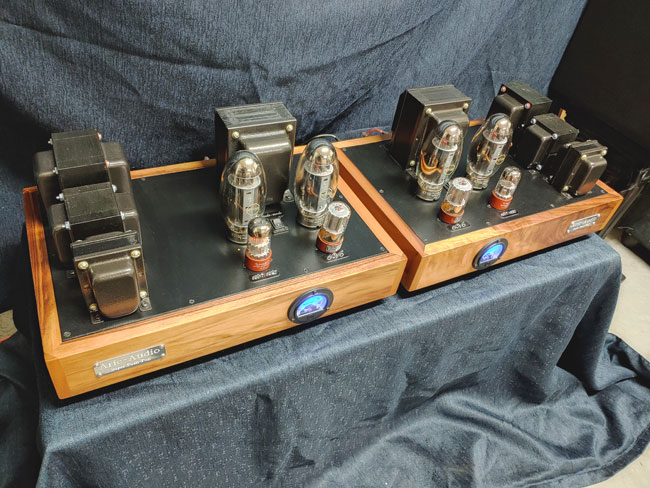
.jpg?KeepThis=true&TB_iframe=true&height=430&width=700)
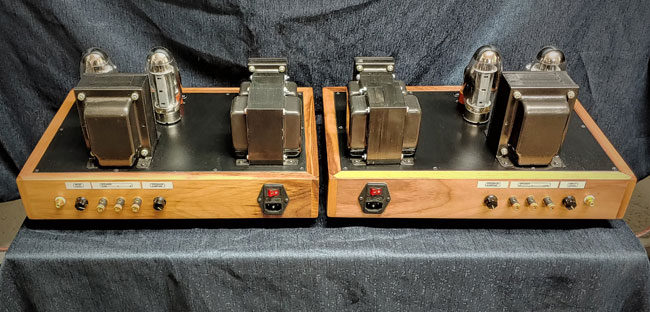




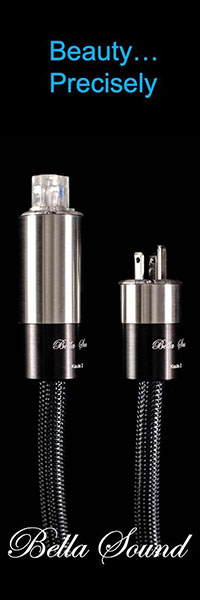
Be the first to comment on: Aric Audio Super KT Push-Pull Monoblock Amplifiers